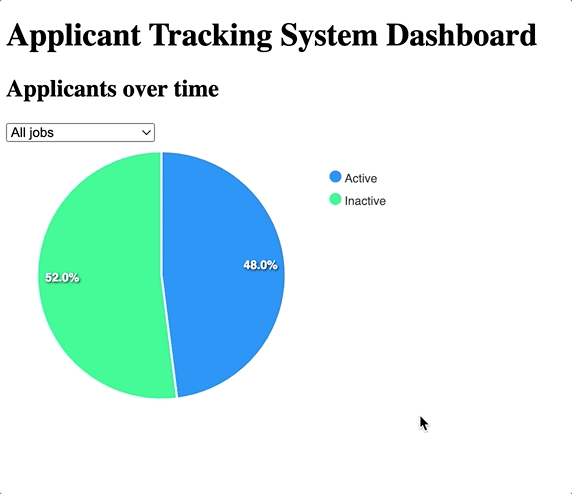19 Sep 2022
Every B2B web app eventually gets charts. Users love them, buyers love them, sales teams love them. Look at all this data! Look how pretty it is! Charts!
I love charts too. So, let’s build a filterable pie chart with Rails and StimulusReflex. Our chart will rely on data from the database, and, because it is 2022, we will be able to update the chart as the user applies a filter without requiring a full page turn.
To render our charts, we will use ApexCharts, but the technique shown in this article will work fine with any other frontend charting library, I just like ApexCharts.
When we are finished, we will have a Rails app with a chart that looks like this:

(It looks nicer when it isn’t being captured as a low quality gif!)
Before beginning, this article assumes that you are comfortable with Ruby on Rails and that you have a passing familiarity with Stimulus and that you have written a Stimulus controller or two before. You won’t need any prior experience with StimulusReflex to follow along with this article.
As always, you can find the completed code accompanying this article on Github.
Let’s dive in!
Read the rest
15-minute read
01 Aug 2022
This newsletter went out via email to the Hotwiring Rails subscriber list, but I know that not everyone wants another email cluttering up their inbox. For those folks, I’ll always publish the full content of the newletter here too, so you can get all the content with none of the emails.
Thoughts or feedback on how I can make this newsletter more valuable? Have something you’d like to include in next month’s edition? Send me an email, or find me on Twitter.
Read the rest
Seven-minute read
30 Jul 2022
The article below is on a topic that has bothered me for a long time — the lack of opportunity for junior Rails developers — spurred by some recent Twitter energy around Ruby on Rails being “back”. I got mentioned in one of the viral threads about Rails being back which jump started my brain into writing this article, but I don’t write it to admonish folks who are excited about Rails and want to bring in more Rails developers with educational content. I love that work, and appreciate the positive energy, and the commitment to building great content. The Rails is back energy just happened to kick off this train of thought about what the long term outlook of the Rails world is when there are few paths for folks to make their living as junior Rails developers.
2022 is an exciting time for Rails developers.
The release of Rails 7 brought Hotwire into the default Rails package along with new asset bundling solutions to get applications off of the dreaded Webpacker. For fans of Redis, the new Kredis gem is a suggested default for Rails 7 applications, offering tools to make it easier for Rails devs to do fun stuff with Redis.
Outside of officially endorsed Rails projects, the StimulusReflex team is steadily making improvements to StimulusReflex, CableReady, and the related set of projects that make building modern, reactive applications in Rails easier than ever.
Despite all of that excitement, folks in the Rails community have gotten used to dealing with “Is Rails dead? Rails is dead.” questions and comments that discourage developers from choosing Rails for their next project.
“Is Rails dead?” questions are silly if you spend any time keeping up with the Rails ecosystem. Rails isn’t dead, it is alive and kicking, just like it has been for nearly 2 decades. Many billions of dollars have been earned riding the Rails and new businesses continue to be built on the foundation that Rails provides.
As a reaction to “Is Rails dead?”, Rails enthusiasts are leaning into a “Rails is back!” narrative — we aren’t dead, we’ve got all this cool new stuff to share!
I don’t think the noise of “Rails is dead!” and “Rails is back” is particularly interesting. Neither narrative adds any value to the conversation. As a Rails enthusiast (and sometime Rails content creator), I love the idea of “Rails is back”, but I don’t think it gets us where we are trying to go.
Read the rest
Eight-minute read
